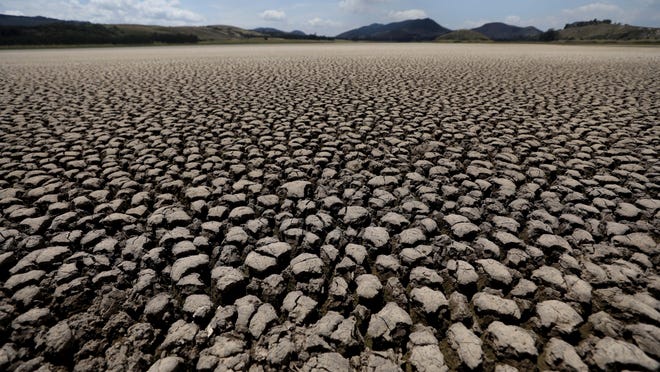PALM SPRINGS, Calif. — People of all ages were swimming, socializing and seeking shade Wednesday morning at the Palm Desert Aquatic Center.
Why so early in the day? It was going to be far too hot later.
“After 4 or 5 o’clock, it’s really too hot to be out here in the sun and have kids trying to do swim lessons and swim teams, that just doesn’t work,” said Mike Marshall, the facility operations manager. “We’re expecting 117-degree weather this weekend and that’s not really good weather for outdoor activity, so swimming in the water does help but they should limit their exposure.”
It’s not just California’s Coachella Valley that will be scorching through the weekend.
Temperatures over 100 degrees are expected across the Southwest region of the U.S., including Utah, Nevada, Arizona, Texas and New Mexico. Many states will likely match or break records, with temperatures even forecast to exceed 110 in some places.
WHAT’S GOING ON WITH THE WEATHER? Subscribe to USA TODAY’s free weekly Climate Point newsletter
Records are already falling in Texas. San Antonio set a new daily record high from Sunday through Tuesday, hitting 104 on Monday that broke the previous daily record by 3 degrees. Galveston set records for warm overnight temperatures on Tuesday and Wednesday, with a low of only 83 degrees.
The National Weather Service has issued several excessive heat warnings for Thursday through Sunday.
“It’s already been pretty hot so far this month in the Southwest, but that’s going to build heading into later this week,” AccuWeather meteorologist Reneé Duff told USA TODAY on Wednesday. “From southeastern California, California Central Valley into Nevada, Utah, Arizona and New Mexico, that corridor is going to be the hottest weather we’ve seen this year.”
The reason for the weekend heat wave is a high pressure system, where a large area of sinking, dry air heats up, Duff said. Contributing factors, such as the ongoing drought and the start of the North American Monsoon, are also partly to blame for rising temperatures.
With dry soil conditions and an uptick in moisture that does not evaporate, the sun’s energy is able to directly heat the ground and the surrounding air.
CLIMATE CHANGE IS NOT YOUR FAULT:But that doesn’t mean you’re off the hook
“One thing to keep in mind with this heat wave, there’s not going to be a ton of relief at night,” Duff said.
Evening temperatures across the region will be in the 70s and 80s.
“This is a serious heat wave and people have to take it seriously,” NWS meteorologist Alex Tardy told USA TODAY. “Whenever we talk about heat warnings and temperatures near records, it needs to be clear that this is unusual.”
Contributing: Dinah Voyles Pulver, USA TODAY


